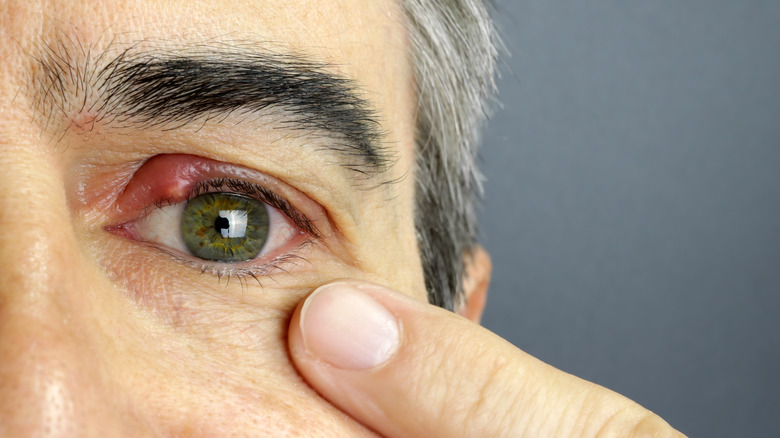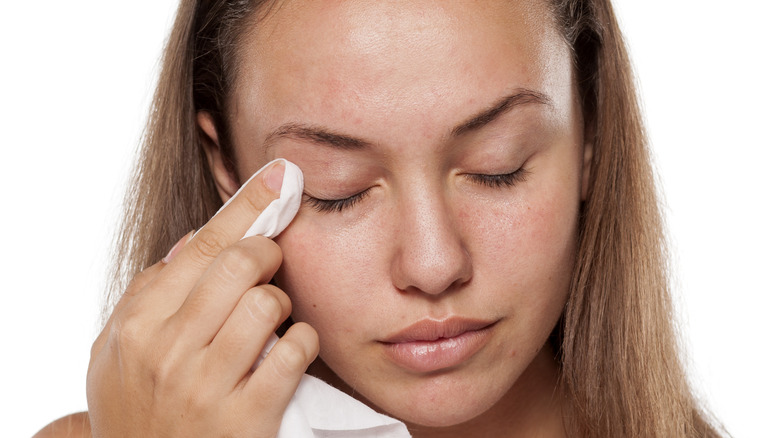This Is What Really Causes A Stye
A stye is a red bump along the edge of your upper or lower eyelid, usually around the eyelash line. Most form on the outside of the eyelid, but some can form inside the eyelid. External styes are far more common than internal ones. Because internal styes are closer to your eyeball, they can be more painful as they swell, according to Healthline.
Most styes are not considered dangerous, but they can affect your vision, making things appear blurry. A stye can also make your eyes sensitive to light. It's not unusual for your eye to water when you have one, and some yellow discharge is also possible. You may develop some crust along the edge of your eyelid, and sometimes, it might feel like you might have something gritty in your eye. Most styes have some pus in them, which will come to a head, much like a pimple (via Healthline).
Styes are often harmless
Most of the time, a stye is the result of an infection of one or more of the oil glands in your eyelid. The glands become blocked by bacteria, which cause redness and swelling. You may be prone to developing styes if you have had one before, or if you have had inflammation of the eyelids. The Cleveland Clinic notes that if you have dry skin, diabetes, or high lipid levels, you are more likely to have styes.
While styes can be painful, the good news is that they generally go away on their own after a few days. You can treat them at home by applying a warm washcloth 3 times a day for 10-15 minutes at a time. You can also gently wipe the eyelid area with eyelid wipes or gentle baby shampoo. Never squeeze or pop a stye, as this could make the infection spread. Do not wear contacts or makeup until the stye has gone away. If a stye does not improve after a couple of days, you might want to check with your doctor, who can provide other treatments (via the Cleveland Clinic).


